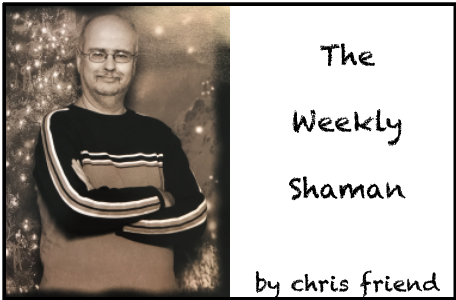Reflecting
In many old horror films vampires lack the ability to have reflections in mirrors with the notable exception of F.W. Murnau’s silent classic “Nosferatu” (1922). In the film the vampire (played by Max Shreck) is dying from the sunlight and inadvertently steps in front of a mirror casting a reflection. In Roman Polanski’s cult favorite, “The Fearless Vampire Killers,” when the mortal vampire hunters dance with the undead they also waltz up in front of a mirror and are “outed” as human. (The film’s European title was Dance of the Vampires.) The vampire’s inability to cast a reflection seems to have been largely the invention of Bram Stoker with Count Dracula avoiding mirrors and with his castle being devoid of any kind of reflective device. When Jonathan
Harker shaves he notices that the Count casts no reflection. It is also suggested that Dracula not only casts no reflection, but also lacks a shadow and cannot be photographed (because his likeness cannot be captured on any surface).But the idea of a vampire’s lack of a reflection can be traced to all manner of folklore.
Belief that a mirror can steal souls seems to have been widespread. Often when a person dies it was common to turn mirrors to the wall. Being an old hillbilly here in West Virginia, I’ve heard of this belief among some of our older people, notably of Celtic descent. This belief holds that if the corpse sees its reflection it will become confused and wander, potentially become undead. In
Russian folklore, mirrors were seen as the creation of the devil. Seeing a corpse’s reflection was also thought dangerous, enabling the cadaver to steal someone’s soul through the mirror. Seeing one’s reflection in a room where a corpse would be lying in state was considered unwise and could lead to a living person’s premature death. The idea of the mirror’s vampire-like qualities can be traced to the Greek myth of Narcissus, who so loved his own reflection that it captured his complete attention, and he pined away and died. (Other versions have him simply turning into a flower, which was somewhat nicer). It was considered a bad idea to look in mirror at midnight and by candlelight, since it might conjure up a ghost, the devil, or a vision of one’s own death.
Oddly enough, in some Celtic folklore, to look in a mirror at midnight on Halloween could enable a vision of that person’s future spouse. The practice was most popular among unmarried girls. The ancient Persians held similar beliefs that ghosts could be conjured up in a mirror if the viewer stood quietly and completely still. Of course, breaking a mirror is bad luck, since it was believed to damage the soul.
In recent vampire films the undead can show a reflection. Anne Rice felt that since vampires exist in the mortal world they would inevitably show up in a mirror. Also, if vampires went around without reflections, they would be easier to spot by fearless vampire killers such as Polanski’s. I recently read that Anne Rice got the idea for the visual description for Interview of the Vampire from wonderful made-for-TV movies like Frankenstein-the True Story, a stylish and nearly forgotten gem of a TV horror film-with David McCallum, Jane Seymour (the Bride), James Mason, Leonard Whiting (the Baron), and Michael Sarrazin as the handsome monster who slowly degenerates into something out of Cronenberg. Its excellent production values and acting probably owe more to Hammer Studios than to Mary Shelley. This truly great monster-movie made its debut on NBC in November 1973, a month before another little horror film would be let loose on the world: The Exorcist.

